The Benefits of Using Rock Dust in Your Garden
As your garden grows year after year, the minerals that are native to your soil are used up and need to be replenished. Rock dusts are a natural, easy-to-use soil amendment that can work wonders for your garden. In this comprehensive guide, we will explore the various aspects of rock dust and how it can benefit your soil and plants.
Understanding Rock Dust
Rock dust is a versatile term that encompasses various names like rock flour, rock minerals, rock powder, stone dust, soil remineralizer, and mineral fines. It can be made from any type of mined rock, which is then ground into a fine powder. This powder is rich in minerals and can significantly enhance your soil's health.
What Does Rock Dust Add to My Soil?
Understanding the specific benefits of adding rock dust to your soil is crucial to appreciate the value it brings to your garden. Rock dust is a powerhouse of minerals and micronutrients that can transform your soil into a fertile and nurturing environment for plants. Let's delve deeper into the essential contributions that rock dust makes to your soil:
- Adds Trace Minerals and Micronutrients: One of the primary functions of rock dust is its ability to infuse your soil with a wide range of essential trace minerals and micronutrients. These minerals are often overlooked but are of paramount importance for plant growth. Here's a closer look at some of the vital trace minerals and micronutrients that rock dust supplies to your soil:
- Silicon: Silicon is known for its role in strengthening plant cell walls, enhancing disease resistance, and promoting healthy root development. Rock dust, especially basalt rock dust, is rich in silicon, making it a valuable addition to your soil.
- Iron: Iron is essential for chlorophyll production in plants, which is crucial for photosynthesis. Adequate iron levels in the soil ensure lush and green foliage.
- Magnesium: Magnesium is a central component of chlorophyll molecules and plays a key role in photosynthesis. It also aids in the activation of enzymes involved in nutrient uptake and energy transfer within plants.
- Calcium: Calcium is vital for cell division and growth in plants. It helps in the formation of strong cell walls and contributes to overall plant structure.
- Potassium: Potassium regulates water uptake and loss in plants, making it essential for maintaining proper hydration and turgor pressure. It also influences flower and fruit development.
- Manganese: Manganese is a micronutrient involved in photosynthesis, nitrogen metabolism, and root development. It ensures the efficient utilization of other essential nutrients.
- Cobalt: Cobalt is necessary for the synthesis of vitamin B12 in some plant-associated microbes, which can indirectly benefit plant health.
- Other Trace Minerals: Rock dusts contain a plethora of other trace minerals such as zinc, boron, copper, and molybdenum, all of which contribute to various aspects of plant growth, nutrient absorption, and overall vitality.
- Increases the Cation Exchange Capacity (CEC): Rock dust is a game-changer when it comes to enhancing the Cation Exchange Capacity (CEC) of your soil. CEC measures your soil's ability to retain and exchange essential nutrients, such as calcium, magnesium, potassium, and other positively charged ions (cations) with plant roots. A higher CEC means your soil can hold onto these nutrients for longer, making them readily available to your plants. This increased nutrient retention fosters healthier and more robust plant growth.
- Feeds Beneficial Microbes: Your soil is a bustling ecosystem of beneficial microbes, including bacteria, fungi, and other microorganisms. These microorganisms play a pivotal role in breaking down organic matter, decomposing nutrients, and making them accessible to plants. Rock dust acts as a microbial buffet, providing these vital organisms with the minerals they require to thrive.
As these microbes flourish, they create a symbiotic relationship with your plants, aiding in nutrient absorption and disease resistance. In essence, rock dust not only directly enriches your soil but also fosters a healthy soil microbiome, resulting in flourishing plants and a vibrant garden ecosystem.
Not All Rock Dusts Are Alike - How to Choose the Right One
While all rock dusts provide minerals for your soil, different types of rocks are composed of varying minerals. To determine the best rock dust for your needs, consider getting a complete soil analysis done. Here are some essential considerations when selecting the right rock dust:
Rock Composition
Different rock dusts are made from different types of rocks, leading to variations in mineral content. For example, glacial rock dust, basalt rock dust, and azomite each have unique mineral profiles.
Types of Rock Dust
There are three primary sources for rock dust: Glacial Rock Dust, Basalt Rock Dust, and Azomite. Let's delve into each type to understand their differences and advantages.
Glacial Rock Dust: Nature's Mineral Treasure
Glacial Rock Dust, as the name suggests, is a remarkable soil amendment sourced from rocks deposited by the slow but powerful movement of glaciers. These colossal ice masses pick up rocks and stones as they journey across landscapes, and when they eventually recede or melt, they leave behind a mixture of rocks, creating what is known as a moraine. It is from these mixed piles of rocks that Glacial Rock Dust is derived.
Composition and Richness
One of the standout features of Glacial Rock Dust is its diverse and complex blend of minerals. This composition arises from the wide variety of rocks that glaciers transport and deposit. As glaciers travel over tens or even hundreds of miles, they accumulate rocks of varying types, resulting in a mineral-rich amalgamation. Some of the prominent minerals found in Glacial Rock Dust include calcium, iron, magnesium, and potassium.
- Calcium: Calcium is essential for root development, cell division, and overall plant structure. It contributes to strong cell walls, helping plants withstand environmental stressors.
- Iron: Iron plays a critical role in chlorophyll production, enabling plants to carry out photosynthesis efficiently. Adequate iron levels result in lush, green foliage.
- Magnesium: Magnesium is crucial for enzyme activation and nutrient uptake in plants. It also aids in the synthesis of chlorophyll and supports overall plant vitality.
- Potassium: Potassium regulates water uptake and helps plants maintain turgor pressure, promoting proper hydration. Additionally, it influences flowering and fruiting.
A Comprehensive Mineral Profile
Apart from the primary minerals mentioned above, Glacial Rock Dust also contains other trace minerals such as manganese, cobalt, silicon, and small amounts of various other essential elements. These trace minerals may be present in lesser quantities but are nonetheless crucial for various aspects of plant growth and development.
Basalt Rock Dust: The Earth's Volcanic Bounty
Basalt Rock Dust stands out as a remarkable soil amendment derived from volcanic rock, offering a unique blend of minerals that can enhance your soil's fertility. It is produced as a byproduct of basalt mining, making it an environmentally friendly choice for gardeners. Let's delve deeper into the characteristics and benefits of Basalt Rock Dust.
Origins and Composition
Basalt Rock Dust originates from volcanic basalt, a type of igneous rock formed from the solidification of molten lava. When this volcanic rock is mined for purposes such as landscaping, construction, or industrial use, it is often crushed into various sizes. During this process, some of the basalt is rendered into a fine powder, which is then collected and sold as Basalt Rock Dust for gardening.
Rich in Vital Minerals
One of the distinguishing features of Basalt Rock Dust is its mineral content. It contains a range of essential minerals and micronutrients that can benefit your plants and soil. Some of the key minerals found in Basalt Rock Dust include:
- Calcium: Calcium plays a vital role in cell wall formation, root growth, and overall plant structure. It contributes to the development of robust cell walls, making plants more resilient.
- Magnesium: Magnesium is essential for chlorophyll production and acts as a cofactor in numerous enzyme reactions within plants. It supports photosynthesis and nutrient uptake.
- Iron: Iron is crucial for chlorophyll synthesis, allowing plants to capture sunlight and convert it into energy through photosynthesis. Adequate iron levels promote healthy, green foliage.
- Silicon: Silicon strengthens plant cell walls, increasing resistance to pests and diseases. It also enhances root development and nutrient absorption.
- Other Beneficial Minerals: Basalt Rock Dust is also a source of minerals like manganese, silicon, cobalt, zinc, boron, and aluminum. These minerals contribute to various aspects of plant growth and nutrient utilization.
Environmental Friendliness
One notable advantage of Basalt Rock Dust is its environmentally friendly nature. Since it is a byproduct of basalt mining, its production does not involve additional resource extraction or environmental harm. This makes Basalt Rock Dust an eco-conscious choice for gardeners who are mindful of their ecological footprint.
Azomite: The Marvel of Trace Minerals
Azomite is a unique and extraordinary rock dust sourced from a single mine in central Utah. Its name, Azomite, is an acronym for "A to Z Of Minerals Including Trace Elements," reflecting the remarkable diversity of minerals it contains. This exceptional rock dust offers a wide range of essential nutrients and trace minerals that can profoundly impact your soil and plants.
Geological Formation
The story of Azomite begins millions of years ago when a volcanic eruption spewed vast quantities of ash into a nearby seabed. Over time, the water in the seabed dried up, and the resulting mixture of ash and marine sediment transformed into rock. In geological terms, Azomite is classified as "hydrated sodium calcium aluminosilicate," and its unique origin contributes to its unparalleled mineral richness.
A Multitude of Minerals
Azomite boasts the widest range of minerals among all rock dusts, making it a true treasure trove for your soil and plants. Some of the key minerals and trace elements found in Azomite include:
- Magnesium: Magnesium is crucial for photosynthesis, enzyme activation, and overall plant vitality. It plays a vital role in chlorophyll production, ensuring healthy, green foliage.
- Calcium: Calcium is essential for cell division, root development, and strong plant structure. It contributes to the formation of sturdy cell walls.
- Potassium: Potassium regulates water uptake and maintains turgor pressure in plant cells, promoting proper hydration and flowering.
- Silicon: Silicon strengthens plant cell walls, increasing resistance to pests and diseases. It also enhances root development and nutrient absorption.
- A Wealth of Trace Minerals: Azomite goes beyond the basics, providing approximately 70 additional trace minerals and elements that are often overlooked but are nonetheless crucial for various aspects of plant growth and nutrient utilization.
Application Rates for Rock Dust
Determining the appropriate application rates for rock dust is essential to ensure that you reap the maximum benefits without overloading your soil. The recommended application rates may vary depending on the type of rock dust you choose; please consult labels for additional details and specifics. Here are the application rates for Glacial Rock Dust, Basalt Rock Dust, and Azomite:
Glacial Rock Dust
Glacial Rock Dust, derived from rocks transported by glaciers, is a rich source of minerals and micronutrients. When applying Glacial Rock Dust to your garden or soil, follow these recommended rates:
- For Gardens and Outdoor Beds:
- Top dress with approximately 2 1/2 pounds per 100 square feet of garden bed area. This rate ensures an even distribution of minerals across the soil.
- Gently rake the rock dust into the soil's surface to facilitate incorporation.
- Reapply as needed or up to once a month during the growing season, depending on the specific mineral needs of your plants.
- For Potted Plants:
- Mix approximately 1 tablespoon per gallon of potting soil or potting mix before planting your potted plants. This ensures that the minerals are evenly distributed.
- For ongoing maintenance, sprinkle a small amount around the plants and gently rake it into the surface. Reapply as necessary or up to once a month.
Basalt Rock Dust
Basalt Rock Dust, a byproduct of basalt mining, provides a selection of essential minerals for your soil. When using Basalt Rock Dust, adhere to these recommended application rates:
- For Gardens and Outdoor Beds:
- Top dress with approximately 10 pounds per 100 square feet of garden bed area before planting. This rate ensures an adequate supply of minerals for plant growth.
- For mid-season application, use an additional 5 pounds per 100 square feet to maintain nutrient levels throughout the growing period.
- For Potted Plants:
- Mix approximately 1 cup per cubic foot of potting soil or potting mix before planting potted plants. This rate ensures that the minerals are well distributed in the container.
- Alternatively, top dress with approximately 1 teaspoon per inch of pot diameter for established potted plants.
- For Trees and Shrubs:
- Calculate the appropriate amount based on the trunk diameter. Use approximately 1 cup per 1 inch of trunk diameter and spread it evenly over the root zone. Rake it into the soil and water thoroughly for even distribution.
- For Lawns:
- Apply 50 pounds per 1000 square feet for new lawns. Spread it evenly and water until it soaks in.
- For established lawns, use 30 pounds per 1000 square feet as an annual maintenance application, typically in the spring or fall.
Azomite
Azomite stands out for its wide range of minerals and trace elements. When introducing Azomite into your gardening routine, consider these recommended application rates:
- For Gardens and Outdoor Beds:
- Top dress with approximately 10 pounds per 100 square feet of garden bed area. This rate ensures a diverse mineral supply for optimal plant health.
- You can apply Azomite by either top dressing or mixing it into the soil when planting.
- For Potted Plants:
- Mix approximately 1/2 teaspoon per inch of pot diameter into the potting soil before planting potted plants. This rate ensures that the container adequately distributes the minerals.
- For ongoing maintenance, apply 1 teaspoon every 3 months while the plant is actively growing.
- For Trees and Shrubs:
- Adjust the application rate based on the size of the plant. Typically, use 1 to 5 pounds per tree, depending on its size, and spread it evenly around the root zone. Rake it into the soil and water thoroughly.
- For Lawns:
- Apply 5 pounds per 1000 square feet for new lawns, ensuring even distribution.
- For established lawns, use 3 pounds per 1000 square feet annually in either spring or fall, broadcast evenly, and water it in.
Additional Resources
- The University of Maine Cooperative Extension provides information about adding rock dust to organic home gardens. They discuss the use of Greensand and Azomite, which are sources of potassium, and emphasize the importance of soil testing before applying any amendments.
- The Home and Garden Education Center from the University of Connecticut discusses organic lawn care and mentions natural organic fertilizers, including rock dusts. They explain how these fertilizers rely on microbial action and weathering to release nutrients into the soil.
- The UF/IFAS Extension Orange County in Florida discusses the use of rocks and stones in landscaping. While the primary focus is on their use as structural elements in landscaping, it also touches on how they can be used around heat-tolerant plants and in rain gardens.
- Texas A&M AgriLife Extension Service offers a range of resources on landscaping, including the use of native plants and sustainable gardening practices. While the site does not have a specific article on rock dust, it provides extensive information on landscaping and gardening in Texas, which could be relevant for understanding soil and plant health in similar climates.


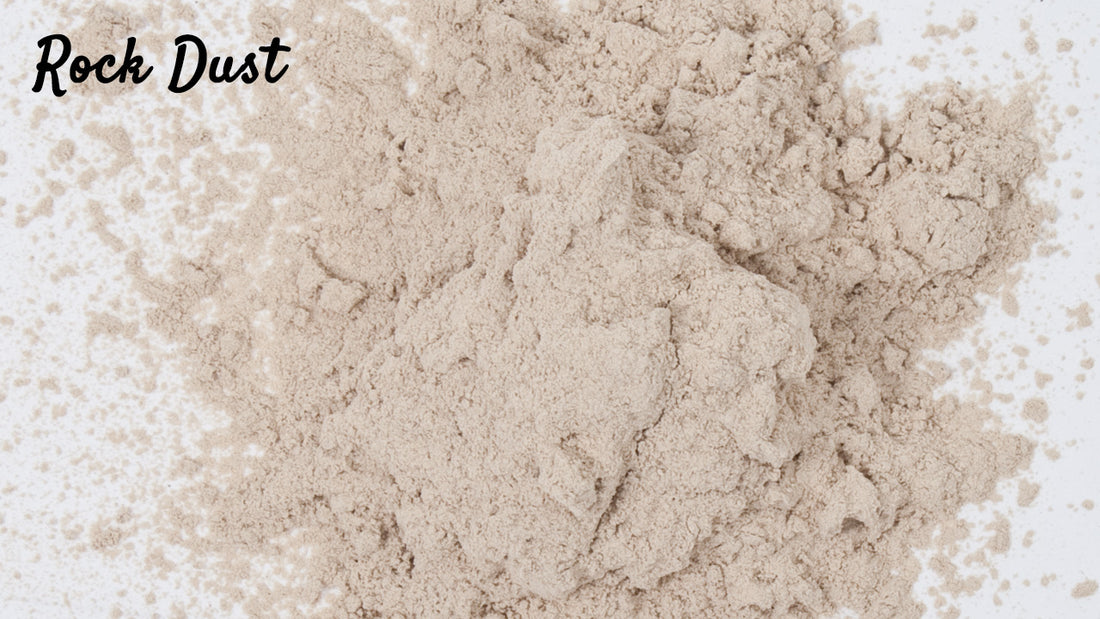
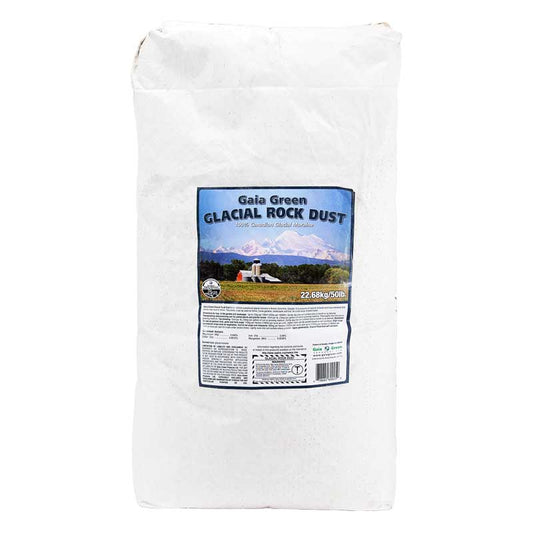

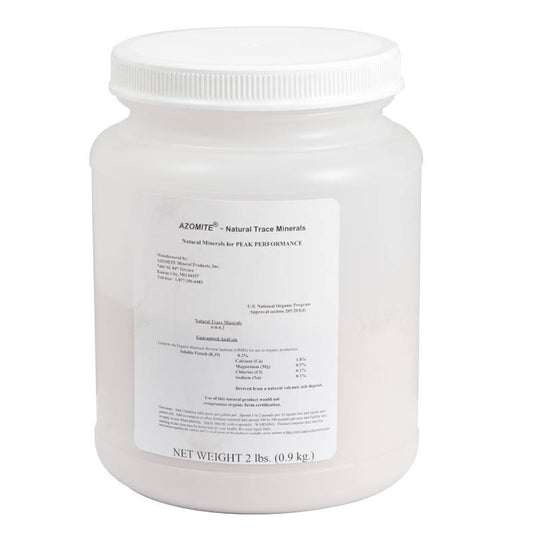
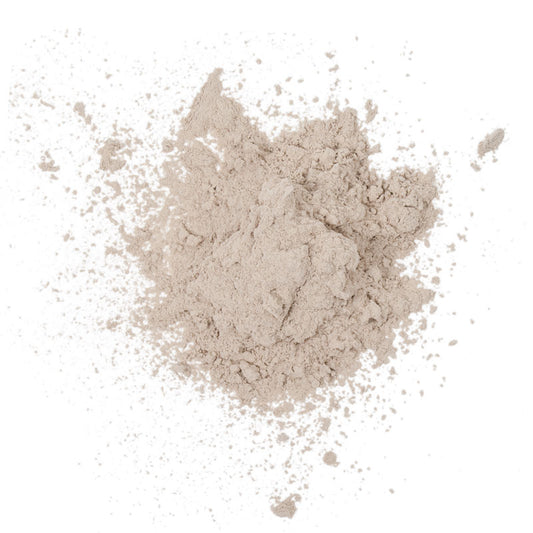
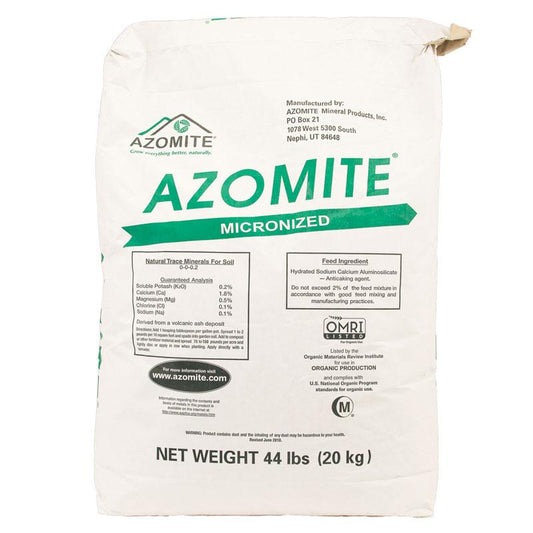

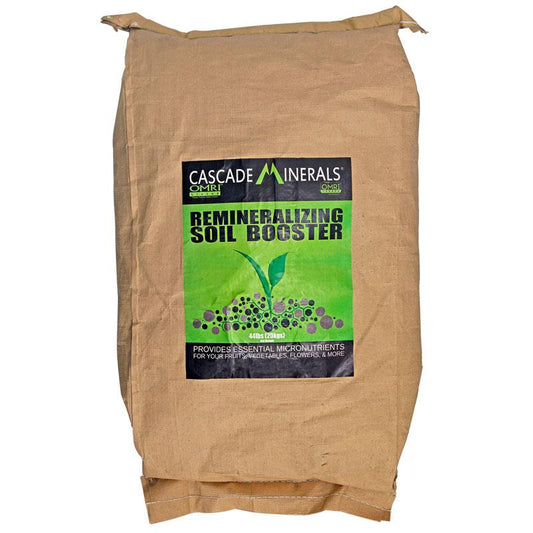
7 comments
Does anyone know of any peer reviewed scientific papers that have been published in regard to the effects of applying mineral dust on soil?
David, you can mix it into the soil and water it in. It is soluble so it will be fine to add it after you have planted.
I’ve been searching for solid information on rock dust. This is great info. Thank you for sharing!
Heavy metal contamination in azomite and glacial rock dust would it be harmful to fruit trees?
This info is so great! Thank you much!